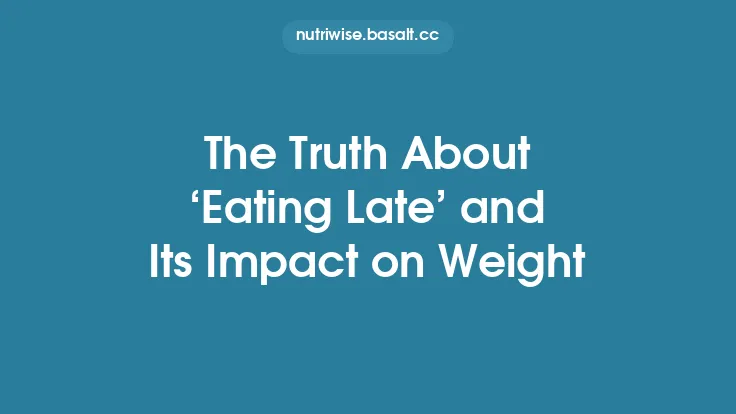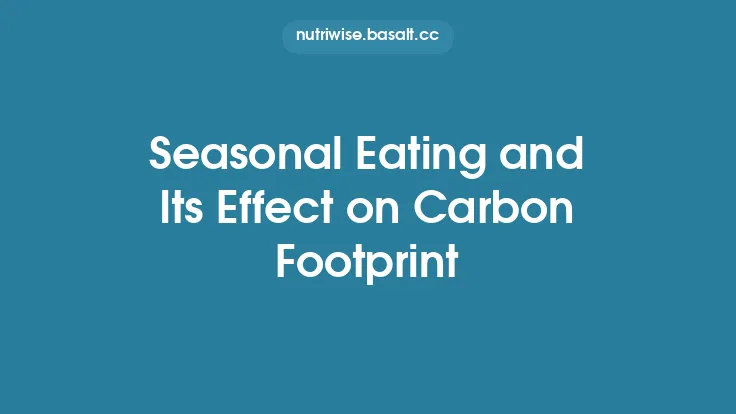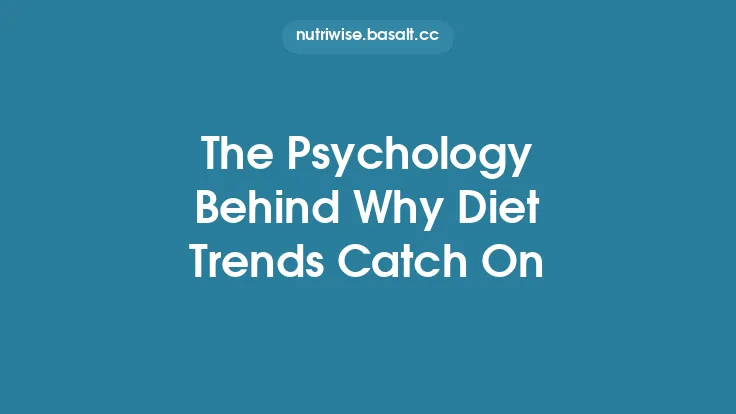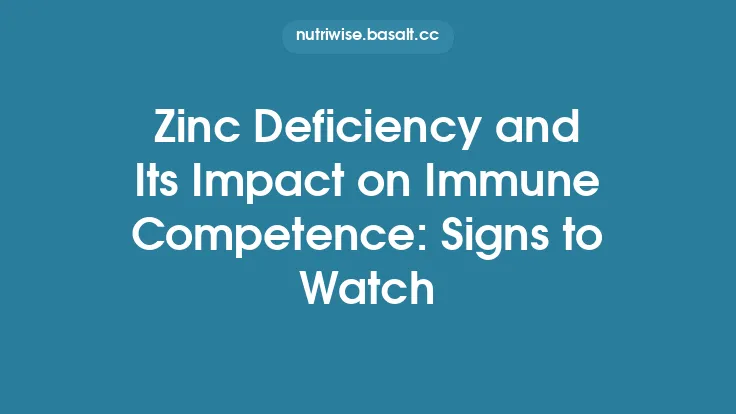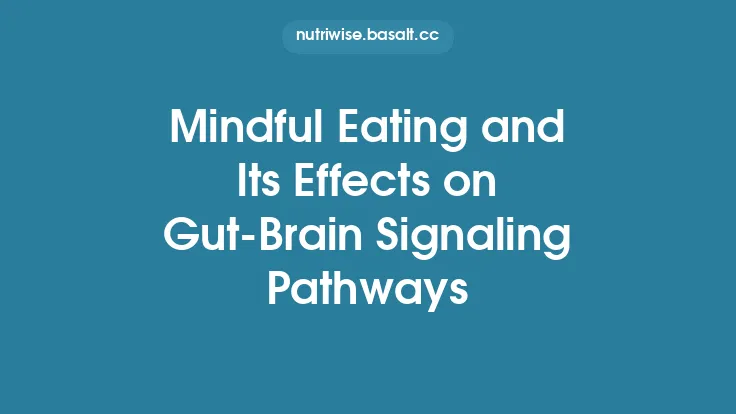Emotional eating—defined as the tendency to consume food in response to feelings rather than physiological hunger—has become a pervasive challenge for anyone trying to navigate the ever‑shifting landscape of diet trends. While many diet fads promise quick results, they often overlook the underlying emotional drivers that can sabotage even the most disciplined plans. Understanding the psychological mechanisms behind emotional eating, how it interacts with popular dietary approaches, and what evidence‑based strategies can mitigate its impact is essential for anyone seeking sustainable, health‑focused change.
The Neurobiology of Emotional Eating
Emotional eating is rooted in the brain’s reward circuitry. When a person experiences stress, sadness, boredom, or even excitement, the limbic system—particularly the amygdala and the ventral striatum—activates. This activation triggers the release of neurotransmitters such as dopamine and endogenous opioids, which produce a temporary sense of relief or pleasure. Simultaneously, the hypothalamic‑pituitary‑adrenal (HPA) axis releases cortisol, a stress hormone that can increase cravings for high‑calorie, palatable foods (especially those rich in sugar and fat).
Key points:
- Dopamine surge: Reinforces the behavior, making the individual more likely to repeat the eating episode when similar emotions arise.
- Cortisol elevation: Promotes gluconeogenesis and can lead to insulin resistance over time, further intensifying cravings.
- Insular cortex involvement: Processes interoceptive signals, blurring the line between true physiological hunger and emotional cues.
Understanding these pathways clarifies why emotional eating feels “automatic” and why it can be especially resistant to willpower alone.
Emotional Triggers Commonly Encountered in Diet Trends
Different diet trends present unique emotional landscapes that can either exacerbate or mask emotional eating patterns:
| Diet Trend | Typical Emotional Trigger | Why It Matters |
|---|---|---|
| Very Low‑Carb/Ketogenic | Fear of “carb withdrawal” or anxiety about losing energy | The abrupt reduction in carbohydrate intake can cause temporary hypoglycemia, prompting cravings for quick‑energy foods. |
| Intermittent Fasting (IF) | Frustration during fasting windows, especially when social meals are missed | The imposed “no‑eat” periods can heighten feelings of deprivation, leading to binge‑type episodes when the window reopens. |
| Detox/Cleanses | Guilt over perceived “impurities” or failure to complete the cleanse | The all‑or‑nothing framing can trigger shame if the protocol is broken, prompting emotional overeating as a coping mechanism. |
| Plant‑Based/Whole‑Food Emphasis | Social isolation or feeling “different” at gatherings | The need to constantly plan alternative meals can create stress, which may be soothed by comfort foods that deviate from the plan. |
Recognizing these pattern‑specific triggers helps individuals anticipate moments of vulnerability and develop pre‑emptive coping tools.
Assessing Emotional Eating: Tools and Techniques
Before attempting to modify behavior, it is crucial to quantify the extent of emotional eating. Several validated instruments exist:
- Emotional Eating Scale (EES) – Measures the intensity of desire to eat in response to specific emotions (e.g., anxiety, sadness, anger).
- Dutch Eating Behavior Questionnaire (DEBQ) – Includes an emotional eating subscale that differentiates between external (environmental) and internal (emotional) cues.
- Ecological Momentary Assessment (EMA) – A real‑time data‑capture method using smartphones to log mood, context, and food intake, providing granular insight into trigger–response cycles.
Combining self‑report scales with EMA data yields a comprehensive picture, allowing for personalized intervention planning.
How Emotional Eating Undermines Diet Trend Adherence
- Inconsistent Caloric Intake – Emotional episodes often involve high‑calorie, low‑nutrient foods, creating spikes and troughs that conflict with the macro‑ or time‑restricted goals of many diets.
- Psychological Reactance – When a diet feels overly restrictive, emotional eating can serve as a form of rebellion, reinforcing a “diet‑fail” narrative.
- Physiological Feedback Loops – Repeated cortisol spikes from emotional eating can impair insulin sensitivity, making it harder to achieve the metabolic adaptations promised by trends like keto or IF.
- Reduced Self‑Monitoring Accuracy – Emotional states can diminish attention to food logs or tracking apps, leading to under‑reporting and a false sense of compliance.
These mechanisms illustrate why emotional eating is not merely a “bad habit” but a systemic barrier that interacts directly with the structural demands of diet trends.
Evidence‑Based Strategies to Mitigate Emotional Eating
1. Mindful Awareness Training
- Practice: Short, 5‑minute body‑scan meditations before meals to identify true hunger signals versus emotional cues.
- Evidence: Randomized controlled trials (RCTs) have shown a 30‑40 % reduction in emotional eating episodes after an 8‑week mindfulness program.
2. Structured Emotional Regulation Skills
- Cognitive Reappraisal: Reframe stressful situations (e.g., “I’m feeling anxious because of a deadline, not because I need food”).
- Distress Tolerance: Techniques from Dialectical Behavior Therapy (DBT) such as “TIP” (Temperature, Intense exercise, Paced breathing, Paired muscle relaxation) can quickly lower physiological arousal.
3. Nutrient Timing Adjustments
- Protein‑Rich Snacks: Consuming 15‑20 g of protein 30 minutes before known stressors can blunt cortisol spikes and reduce cravings.
- Complex Carbohydrate Inclusion: For low‑carb dieters, strategically timed small portions of low‑glycemic carbs (e.g., quinoa, sweet potato) can stabilize blood glucose without derailing ketosis.
4. Environmental Restructuring
- Food Environment Audit: Remove highly palatable, trigger foods from immediate reach; replace with healthier alternatives (e.g., sliced veggies, nuts).
- Cue‑Control: Use visual reminders (post‑its, phone alerts) that prompt a brief pause before eating, encouraging a check of emotional state.
5. Professional Support
- Registered Dietitian (RD) Collaboration: RDs can tailor macro‑distribution to accommodate emotional eating patterns while still aligning with the chosen diet trend.
- Therapeutic Interventions: Cognitive‑behavioral therapy (CBT) specifically targeting emotional eating has demonstrated sustained reductions in binge frequency over 12‑month follow‑ups.
Integrating Emotional Eating Management into Popular Diet Protocols
| Diet Trend | Integration Point | Practical Example |
|---|---|---|
| Keto | Scheduled “re‑feed” days with controlled carb portions to reduce cortisol‑induced cravings. | 1‑2 days per month, 50 g net carbs from leafy greens and berries, paired with mindfulness check‑ins. |
| Intermittent Fasting | Pre‑fast emotional check‑in; if high stress, allow a small, protein‑dense snack to prevent later binge. | 10 g whey protein shake 30 min before fasting window begins, followed by a 2‑minute breathing exercise. |
| Whole‑Food Plant‑Based | Emphasize “comfort” plant foods (e.g., roasted root vegetables, spiced lentil soups) that satisfy emotional cravings without compromising the diet’s ethos. | Create a “comfort bowl” with quinoa, roasted carrots, tahini drizzle, and a pinch of smoked paprika. |
| Detox/Cleanse | Replace strict “no‑cheat” language with “flexible adherence” to reduce guilt‑driven emotional eating. | Allow a single 100‑calorie fruit‑based smoothie on “off‑day” with a brief reflective journaling prompt. |
By embedding emotional regulation tactics directly into the structure of the diet, adherence improves without sacrificing the core principles of the trend.
Long‑Term Outlook: Building Resilience Against Future Diet Fads
While the focus here is on emotional eating’s impact on current diet trends, the skills cultivated to manage it have lasting value:
- Self‑Recognition: Over time, individuals develop a nuanced internal lexicon for differentiating hunger, satiety, and emotional states.
- Adaptive Coping: Replacing food‑based coping with a toolbox of non‑food strategies (e.g., brief walks, creative hobbies) reduces reliance on any single diet’s framework.
- Neuroplastic Change: Repeated mindful responses to emotional cues can rewire reward pathways, decreasing the dopamine surge associated with comfort foods.
These outcomes foster a stable relationship with food that transcends the cyclical nature of diet fads, positioning individuals for lifelong health rather than short‑term compliance.
Practical Take‑aways for Readers
- Identify Your Triggers – Use a simple mood‑food diary for one week; note patterns.
- Implement a Mini‑Mindfulness Routine – 3 breaths before each snack; ask “Am I hungry, bored, or stressed?”
- Adjust Your Diet Plan – If you’re on a low‑carb regimen, schedule a modest carb “buffer” on high‑stress days.
- Seek Professional Guidance – An RD or therapist can personalize strategies and monitor progress.
- Reframe Setbacks – View an emotional eating episode as data, not failure; adjust your plan accordingly.
By systematically addressing the emotional underpinnings of eating behavior, individuals can navigate diet trends with greater confidence, reduce the risk of derailment, and ultimately cultivate a healthier, more balanced relationship with food.

